A
Arch
The arches of the foot are formed by bones, muscles, tendons, and ligaments that provide support, flexibility, and shock absorption. The medial longitudinal arch (MLA) runs along the inside of the foot and acts as the main shock absorber during push-off. The lateral longitudinal arch (LLA) runs along the outside of the foot and helps with weight distribution. The transverse arch (TA) runs across the midfoot and forefoot, maintaining stability during weight-bearing.
Arthritis
Arthritis is a general term for stiffness, pain, and swelling in the joints. The most common type is osteoarthritis (OA), a degenerative condition caused by gradual “wear and tear” of cartilage and surrounding tissues.
B
Ball of Foot (Metatarsal Heads)
The padded area on the sole between the arch and toes, where the metatarsal heads bear weight during walking or running.
Bunions (Hallux Valgus)
Hallux valgus is a condition where the big toe moves inward toward the second toe. Bunions are the bony bumps that form at the base of the big toe due to this misalignment, often causing pain, inflammation, and difficulty wearing footwear.
D
Dorsiflexion
Lifting the front of the foot upward toward the shin.
E
EFM (Extrinsic Foot Muscles)
These muscles originate in the lower leg and attach to the foot, crossing the ankle joint. They control larger movements of the foot and ankle, including plantarflexion, dorsiflexion, inversion, and eversion, and play a key role in balance and propulsion.
F
Flat Feet
A condition where the arch is lowered or flat against the ground. Flexible flat feet show an arch when non-weight-bearing; rigid flat feet remain flat whether standing or sitting and may cause pain or require intervention.
G
Gait
The pattern of how a person walks or runs, including the coordinated movement of the feet, legs, and body.
H
Hammer Toe
A toe deformity where one or more smaller toes bend at the middle joint, curling downward instead of lying flat—commonly the second toe—often leading to forefoot discomfort.
Heel (Calcaneus)
The heel bone sits below the talus and forms part of the ankle. It is the attachment site for the Achilles tendon, linking calf muscles to the foot.
Heel Drop
The difference in stack height between the heel and forefoot. Conventional shoes have a higher drop (8–10 mm); minimal shoes are closer to 0 mm.
I
IFM (Intrinsic Foot Muscles)
These muscles originate and insert within the foot, stabilising the arches, supporting the toes, and enabling fine motor control. They are arranged in plantar and dorsal layers.
M
Metatarsalgia
Pain under the forefoot, often linked with toe or hallux deformities or interactions between the forefoot, hindfoot, and ankle.
Metatarsals (Main Foot Bones)
Long bones connecting the midfoot to the toes, transferring weight during movement.
Minimal Footwear
Lightweight, flexible shoes with low stack height and heel-to-toe drop, designed to let the foot move naturally and build strength through active function.
Morton’s Neuroma
Irritation and swelling of the nerve between the third and fourth toes, causing forefoot pain and numbness.
P
Phalanges (Toes)
The toe bones—three in each smaller toe and two in the big toe—allowing flexibility and push-off during walking and running.
Plantar Fasciitis
Inflammation of the plantar fascia, the thick connective tissue along the foot’s bottom that supports the arch, causing heel or arch pain especially on first steps in the morning.
Plantarflexion
Pressing the front of the foot downward, like standing on tiptoes.
Pronation
The natural inward roll of the foot during walking or running to absorb shock.
Proprioception
An individual’s awareness of their body’s position and movement in space.
R
Rigid Foot
A foot with limited motion through its joints, often resulting in decreased shock absorption and altered gait mechanics.
S
Supination
When the foot rolls outward during walking or running, shifting weight toward the outer edge.
T
Tendonitis
Inflammation of tendons, often from sudden activity increases. Chronic overuse may lead to tendinosis; “tendinopathy” covers both acute and overuse tendon pain.
Toe Box
The front portion of a shoe where the forefoot sits. Minimal footwear often features a wide toe box for natural toe spread.
Turf Toe
A sprain of the ligaments around the big-toe joint caused by excessive upward bending, common in sports played on hard surfaces.
